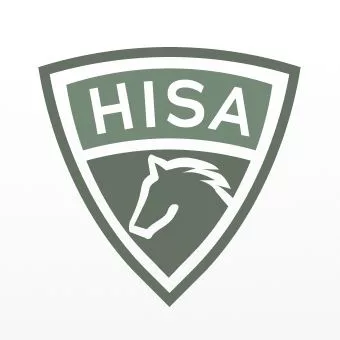When the Horseracing Integrity and Safety Authority’s (HISA) Racetrack Safety Rules take effect Monday, July 8, 2024, farrier-related regulations will be more substantial than the three paragraphs introduced in 2022.
The new rules, approved by the Federal Trade Commission earlier this year, provide context and definitions, institute an inspection program, create a horseshoe inspector position, mandate annual continuing farrier education and detail horseshoeing regulations.
“The approval of these rule changes marks a significant step forward in our ongoing efforts to enhance the safety and integrity of Thoroughbred horse racing,” says Lisa Lazarus, CEO of HISA. “We are committed to working closely with all industry participants during this transition period and beyond to ensure these new standards are fully understood and effectively implemented.”
Definitions
The Racetrack Safety Rules establish the first government definition of farrier in United States history. Although many within the industry might define farrier in one way or another, HISA’s definition likely will be the foundation for any future regulations, regardless of discipline.
“Farrier means a farrier (or horseshoer, plater or blacksmith) who provides all aspects of hoof care or orthotic services to covered horses, including trimming and/or the application of various orthotics to the hoof,” according to the Racetrack Safety Rules.
While the definition of farrier is debuting in the 2024 rules, a description of traction devices returns. However, context is added.
Previously, HISA defined traction devices as including “but are not limited to rims, toe grabs, bends, jar calks and stickers.”
The new definition is as follows: “Traction device means any device that extends beyond the ground surface of the horseshoe and includes but is not limited to inserts, wear plates, rims, toe grabs, bends, jar calks, stickers, ice nails, frost nails and mud nails.”
Horseshoe Inspector
HISA’s rules previously did not include horseshoe inspections, nor did they designate an individual to inspect horseshoes. The 2024 regulations change that by creating a horseshoe inspector and establishing the responsibilities and duties of the position.
The horseshoe inspector will be employed, contracted or appointed by a state racing commission, racetrack or HISA. The individual “will be trained in, and is responsible for, inspecting horseshoes or other orthotics on hooves of covered horses,” according to the rules.
During the comment phase of rule creation, HISA was asked whether the inspector’s qualifications should be defined.
“The Authority believes that it is unnecessary to prescribe at length the specific qualifications of the horseshoe inspector and further notes that minimum qualifications for this position are set out in Rule 2137(b),” HISA replied. “The Authority exercises oversight over personnel performing functions on its behalf that allows the Authority to ensure that personnel are qualified to perform their duties.”
Rule 2137(b) establishes that the horseshoe inspector shall meet three criteria.
- The inspector is licensed by the state racing commission if required in the applicable jurisdiction.
- The inspector is “knowledgeable of matters pertaining to hooves, horseshoes and the rules of the Authority pertaining to covered horses and horseshoes.”
- Complete at least 2 hours of continuing education (CE) annually.
“The Authority believes it is important to have a designated individual at each racetrack responsible for inspecting horseshoes and ensuring compliance with the Authority’s rules,” HISA states.
Each covered horse entered to participate in a race will have its horseshoes inspected by the individual on race day before the start of the event. The trainer or a representative who is knowledgeable of the horse must present the mount for inspection.
The horseshoe inspector must include identification of the horse and “examination of the horseshoe or other orthotics and documentation of any features relating to a violation of horseshoe rules.” The inspector will notify the racetrack stewards whether a determination cannot be made or the horse is “wearing non-compliant horseshoes” before the mount leaves the paddock.
“This measure ensures that the stewards are notified of covered horses that should not be competing and can take the appropriate steps to remove the horse from the race,” HISA states. “Intervention on the part of the horseshoe inspector or steward has the potential to prevent or reduce the number of incidents and injuries associated with the use of shoes that are not compliant with the Authority’s rules.”
Horseshoe Rules
Traction devices once again are the focus of HISA’s Racetrack Safety Rules. The regulations apply during training and racing. The rules are as follows:
“On dirt surfaces, traction devices other than full rims 2 millimeters or less in height from the ground surface of the horseshoe are prohibited on forelimb horseshoes. Traction devices other than full rims 4 millimeters or less in height from the ground surface of the horseshoe, or toe grabs 4 millimeters or less in height from the ground surface of the horseshoe, are prohibited on hindlimb horseshoes.
“On synthetic surfaces, traction devices other than full rims that are 2 millimeters or less in height from the ground surface of the horseshoe are prohibited on forelimb and hindlimb horseshoes.
“On turf surfaces, traction devices are prohibited on forelimb and hindlimb horseshoes.”
HISA says it’s limiting traction devices during training and racing in hopes of reducing injuries and casualties.
“Traction devices affect the interaction of the hoof with the racetrack surface, altering movement of the hoof through the racetrack surface,” according to the Authority. “That reduction of movement contributes to catastrophic breakdowns and skeletal injuries. The rule follows the scientific evidence that shows that traction devices increase equine injuries. The rule is intended to increase the safety of riders and covered horses by reducing the number of accidents resulting from injuries associated with the use of traction devices. The rule will standardize traction device use nationwide.”
Like horseshoe inspectors, farriers also are required to complete at least 2 hours of continuing education and be knowledgeable of the horseshoe rules.
“The Authority is developing a CE program that will be a component of the registration portal and will be made available to covered persons participating in states where the state racing commission has not entered into an agreement with the Authority to implement [continuing education]. It will allow the entry and monitoring of CE credit hours for the convenience and benefit of all covered persons required to complete CE hours.”








